Breakfast in Cambodia reflects the fast-paced culture of modern life, while the flavours unveil a long history of international influence.
The Start to the day

In Cambodia, breakfast hasn't always been the most important meal of the day. Many rural Cambodians start their day in the fields on an empty stomach, snacking on custard apple, ambarella or guava while they work, and then break for an early lunch once the day starts to heat up. If they do eat a morning meal at home, it’s usually leftover rice cooked into a thick porridge, fried with flecks of dried fish or soaked in water and served with palm sugar sap, sweet mango and fish.
However, mornings present a challenge for urban residents who lack the time to prepare a meal at home before the work day begins.
Breakfast at the market

In capital city Phnom Penh, mornings are frenetic as motorcycles jostle with SUVs as they manoeuvre the city’s congested streets. In recent years, young Cambodians have moved from their home provinces to Phnom Penh for better education and employment opportunities, contributing to gridlocked morning commutes and even less time for breakfast.
Many city workers find it easier to pick up something to savour while on their way to work. A breakfast of noodles or rice – at a market stall (pictured) – can cost as little as 3,000 riel.
A grab-and-go treat

Nom korng, the Cambodian version of doughnuts, are a common grab-and-go breakfast option. Sold in Cambodian markets, these sweet pastries are made with rice flour and topped with a crispy palm sugar glaze and sesame seeds. Although doughnuts are found throughout the world, nom korng likely developed without much outside influence. But other local breakfast dishes reflect the many countries that shaped Cambodia’s cultural identity over thousands of years.
A morning staple
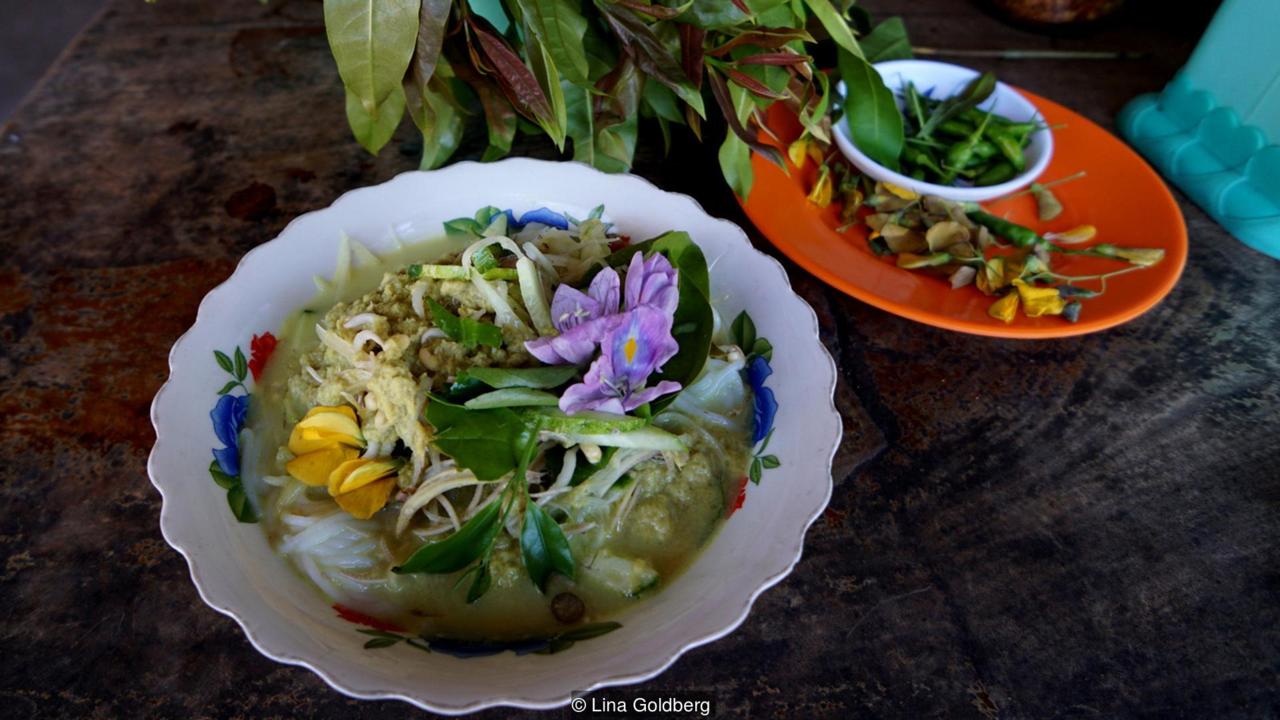
Cambodia’s quintessential breakfast dish is num banh chok – often referred to simply as ‘Khmer noodles’ – is composed of fresh rice noodles with a subtle curry made from locally caught Tonle Sap fish. Spices such as turmeric hint at the centuries-old Indian influence that also underlies the Khmer language, writing system and religion.
Chinese influence
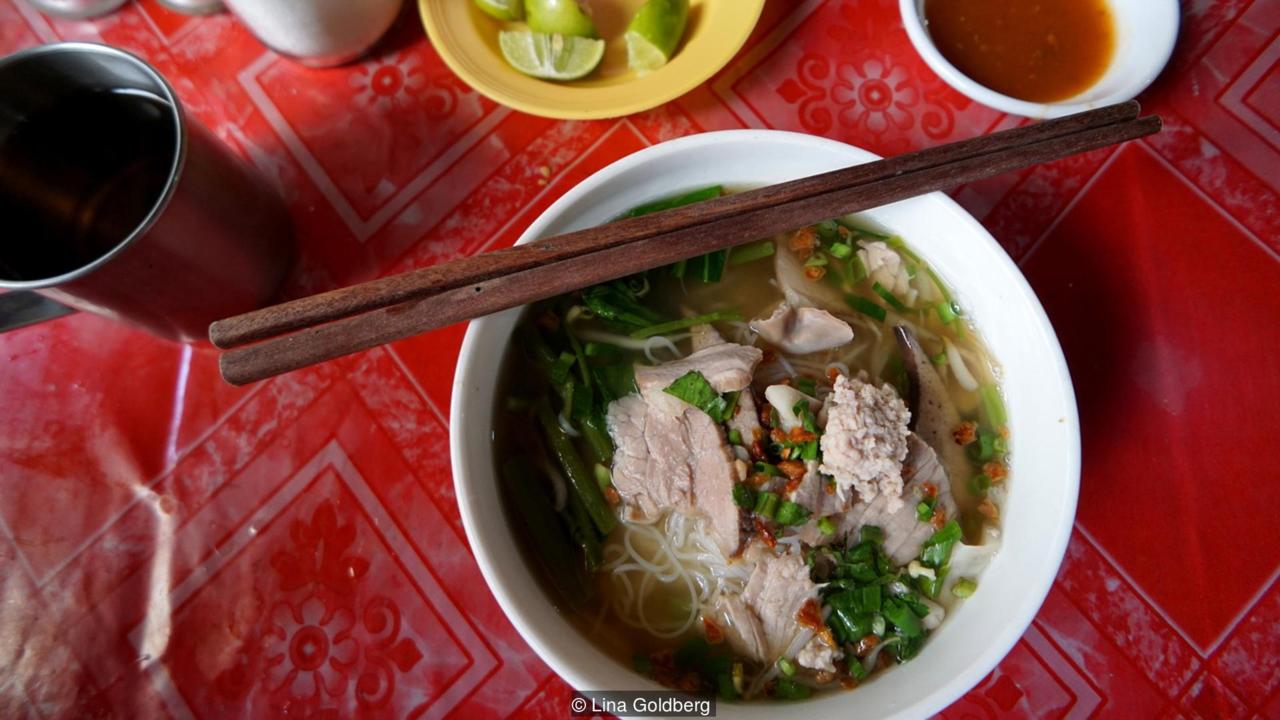
As a powerful ally through the years, China has spread its influence all over Cambodia – and the morning meal is no exception. A popular breakfast in Cambodia is a noodle soup called kuy teav, a name thought to be derived from guǒtiáo, the Chinese word for a type of flat rice noodle.
A French culinary connection
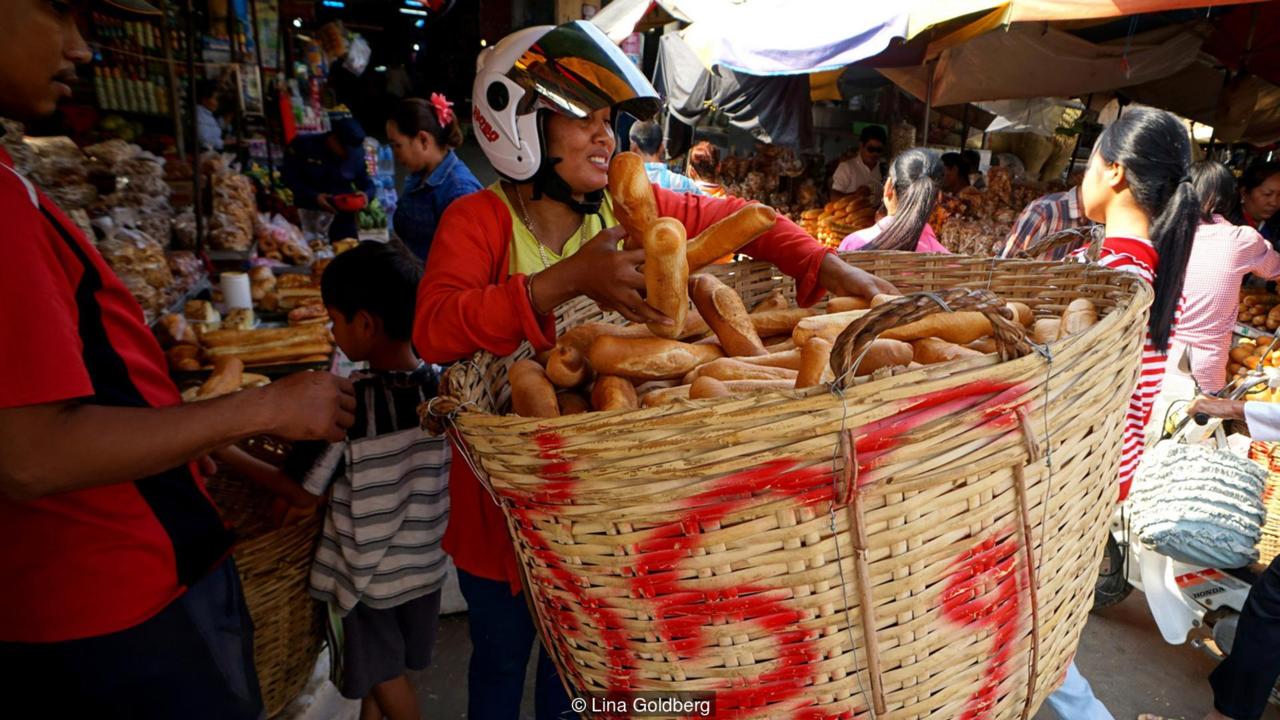
The French have also left their mark on Cambodian culture and cuisine. The country was a French protectorate from 1867 to 1941, and again after World War II until 1953, when the nation gained independence. The French introduced baguettes to Indochina, including Cambodia, and the Khmer name for bread, ‘num pang’, derives from the French ‘pain’. Baguettes are served with beef braised in palm sugar or a hearty chicken curry made with a fragrant base of lemongrass, turmeric and galangal (a root similar to ginger).
A sweet brew
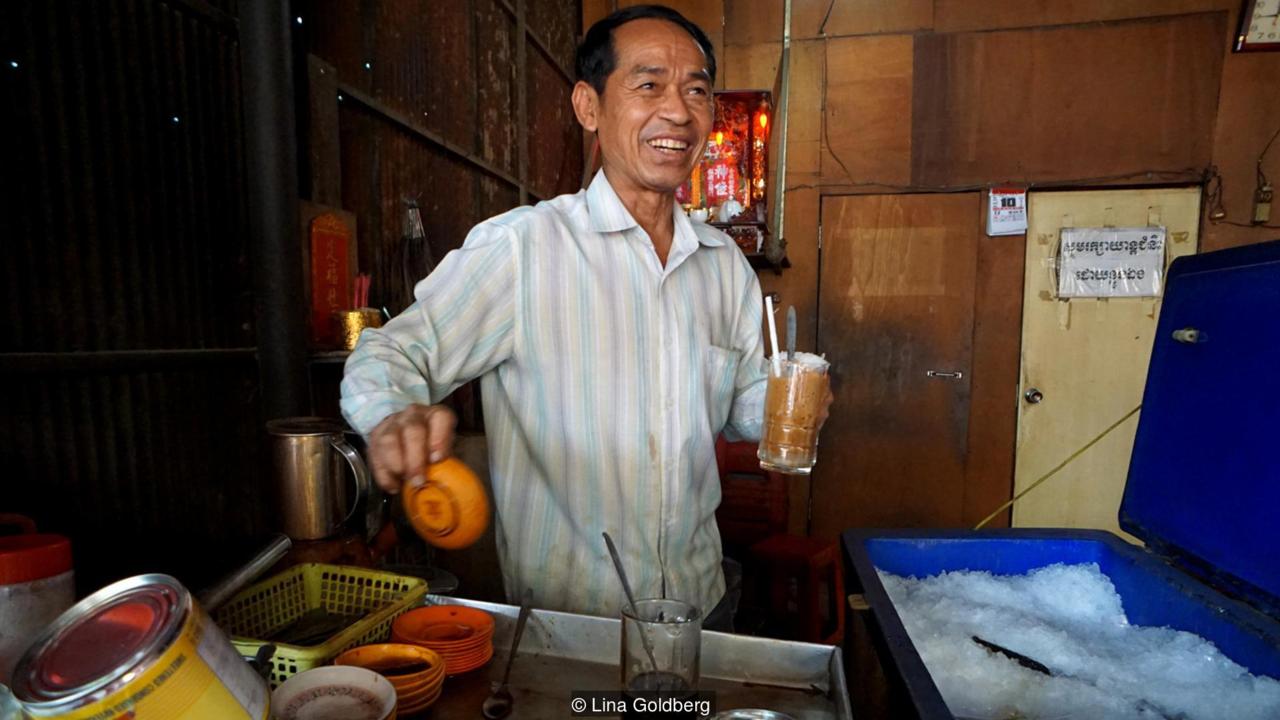
The French also instilled in Cambodians a love of coffee. In Cambodia, coffee beans are dark-roasted over charcoal, then coated with oil or pork fat. Boiling water is poured over the grounds through a cloth strainer into a large, usually dented, metal kettle. The resulting brew is bitter and highly caffeinated. To offset the bitterness and cater to the Cambodian sweet tooth, it’s served with sweetened condensed milk or ‘black’ with several heaping spoonfuls of sugar, usually over ice.
A local favourite
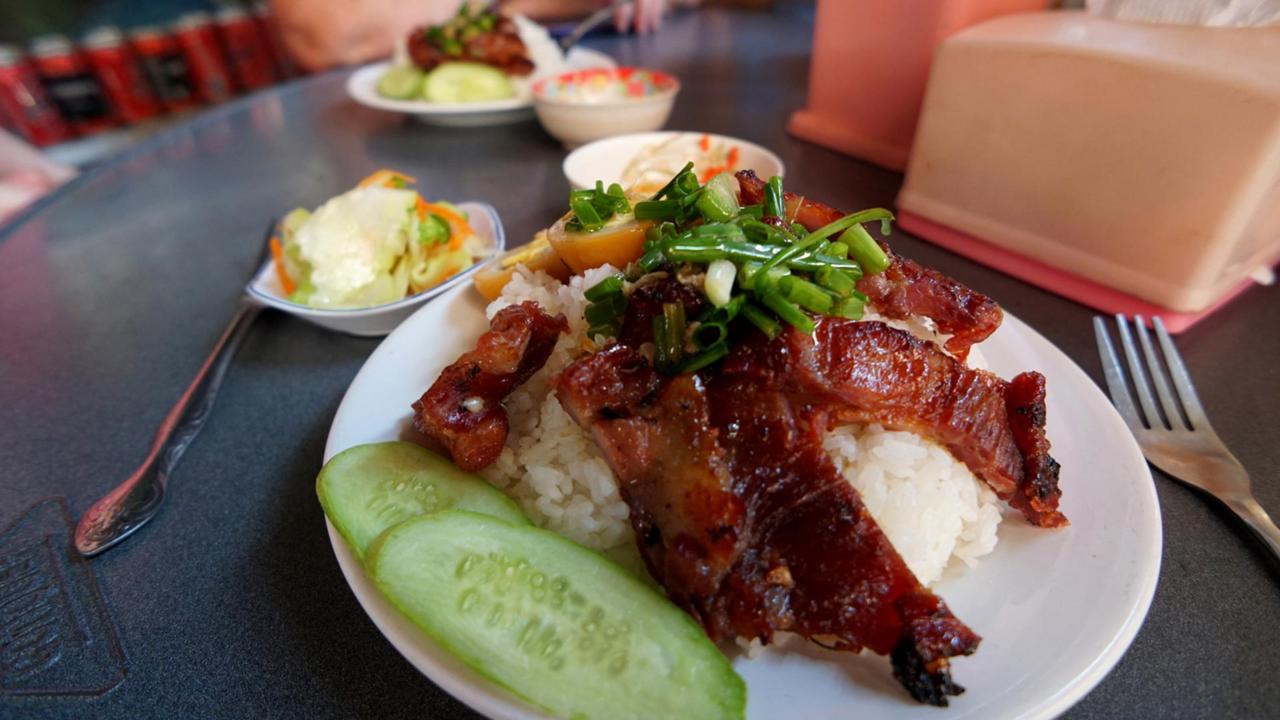
As much as Cambodia's morning meal is a fusion of cuisines, Cambodians claim some breakfast dishes purely as their own. While many food items sold in Cambodia's marketplaces are imported, more traditional dishes rely on locally sourced ingredients. One such dish is bai sach chrouk: sweet, smoky, charcoal-grilled pork served with rice and tangy pickled radish and cucumber.
Another one of Cambodia's most popular breakfasts, a rice porridge known as bobor, is deeply rooted in Cambodian history. In fact, a recipe for bobor appears on an Angkorian-era carving believed to be from the 10th Century.
Source : bbc.com



















